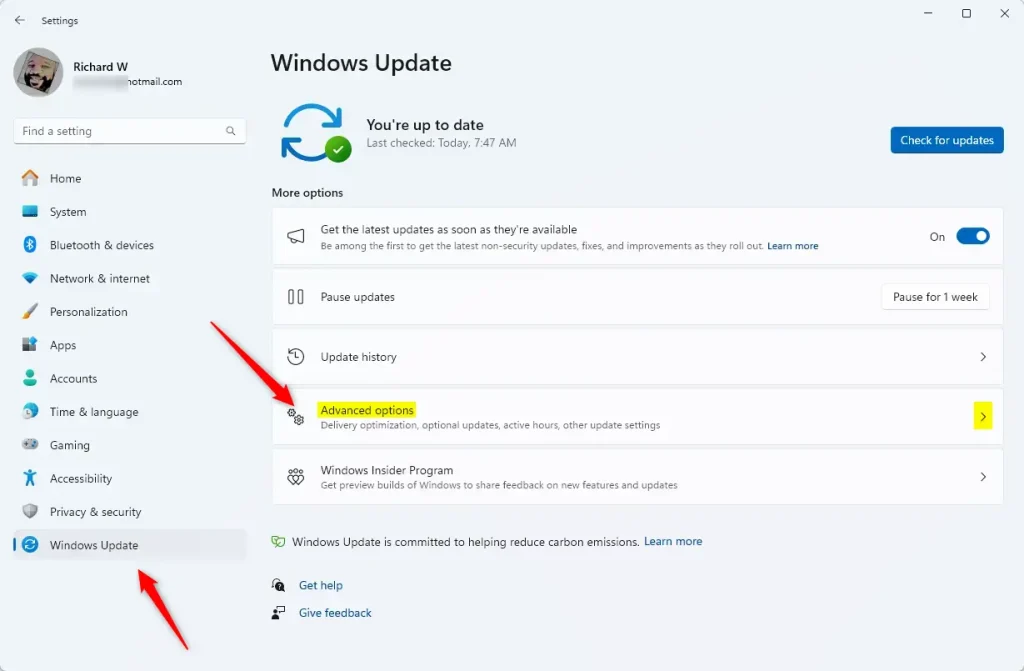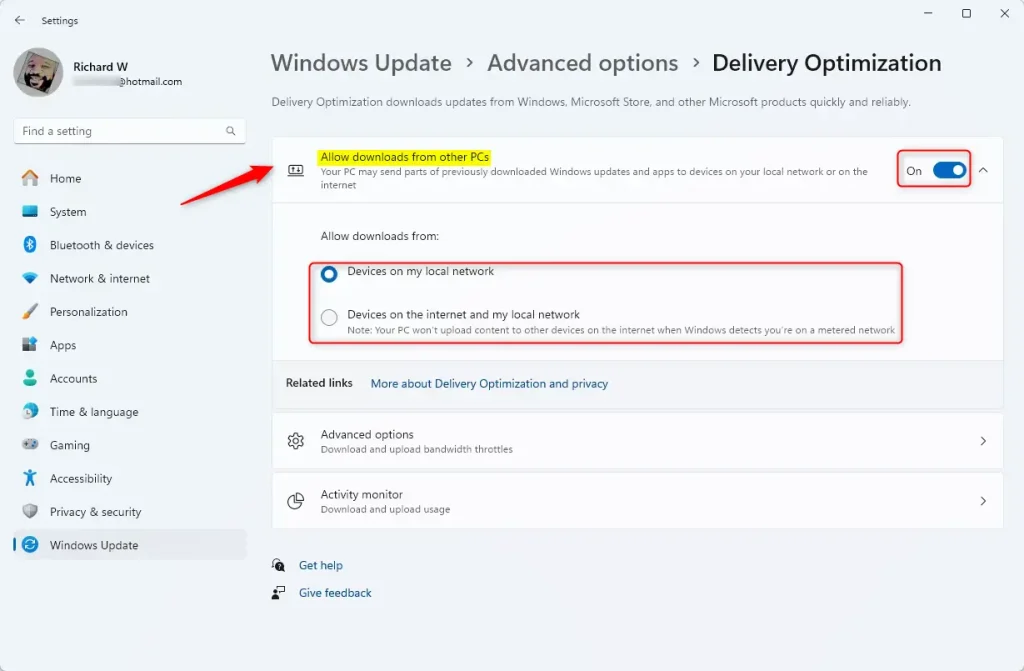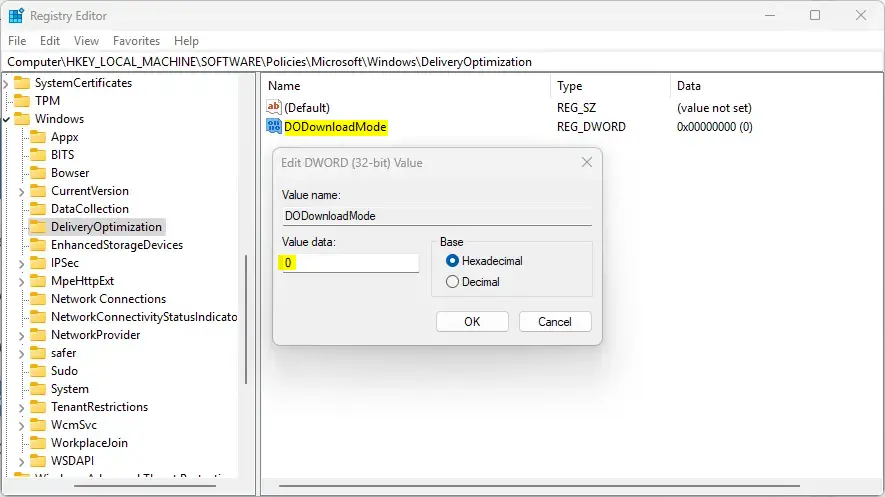This post shows students and new users steps to turn On or Off Windows Update Delivery Optimization on Windows 11.
By default, Windows allows your computer to receive updates and Microsoft Store apps from other sources besides Microsoft, like other PCs on your local network or PCs on the internet that are downloading duplicate files.
Not only can your computer download updates from other PCs on your network or the internet, but your PC can also send updates and apps to other PCs on your local network or the internet based on your settings.
For several reasons, you may want to turn “Allow downloads from other PCs” on or off in Windows Update Delivery Optimization. As mentioned in the text, turning this option on can speed up Windows updates for your computer by downloading updates from other sources besides Microsoft, like other PCs on your network or the internet that are downloading duplicate files.
However, this may also introduce some concerns, especially if your computer is downloading updates from other PCs on the internet or sending update files to other computers that you have no idea where they are or who owns them.
Additionally, if you have a limited internet connection, downloading updates from other PCs on your network may consume your internet data quickly. In these cases, you may want to turn off “Allow downloads from other PCs” to download updates only from Microsoft’s servers and never send updates to other PCs on your local network or the internet.
How to disable Windows Update Delivery Optimization in Windows 11
As mentioned above, with Windows Update Delivery Optimization enabled, your PCs will download from other sources besides Microsoft.
Below is how to do that.
First, open the Windows Settings app.
Then, select Windows Update on the left and the Advanced options tile on the right to expand it.

On the “Windows Update > Advanced options” settings pane, select the “Delivery Optimization” tile under “Additional options to expand it.

On the “Delivery Optimization” settings pane, select the “Allow downloads from other PCs” tile.
Then, toggle the switch button to the On position to Allow downloads from other PCs.
Once allowed, select the following options:
- Devices on my local network (default)
- Devices on the Internet and my local network
To disable, toggle the switch button to the Off position.

Exit the Settings app when you’re done.
Turn on or off restart notifications after Windows Update using the Windows Registry Editor
Yet another way to disable the notifications after Windows updates is to use the Windows Registry editor.
First, open the Windows Registry and navigate to the folder key path below.
Disable or enable for current user:
Computer\HKEY_LOCAL_MACHINE\SOFTWARE\Policies\Microsoft\Windows\DeliveryOptimization
Next, double-click the DODownloadMode (REG_DWORD) name on the DeliveryOptimization key’s right pane to open it.
Then, use the value table below to configure Delivery Optimization for Windows Update.
- Enter
1to enable Delivery Optimization for devices on my local network. - Enter
3to enable Delivery Optimization for devices on the internet and my local network. - Enter
0to disable Delivery Optimization and turn off downloads from other PCs
If you do not see the “DODownloadMode” item, right-click a blank area and create a new DWORD (32-bit) registry item.
Then, enter the name “DODownloadMode” and enter a desired value to enable or disable it.

To restore the default Delivery Optimization behavior, delete the “DODownloadMode” name created above.
Warning: Editing the Registry can be risky and may cause irreversible damage to your installation if not done correctly. It’s recommended that you back up your PC before proceeding.
Save your changes and restart your computer.
Conclusion
In summary, managing Windows Update Delivery Optimization settings is essential for optimizing your update process and ensuring your computer’s security and efficiency. Here are the key takeaways:
- Control Update Sources: You can customize where your PC downloads updates from, helping to speed up the process or conserve internet data.
- Understand Your Options: Choose between allowing downloads from local devices or local and internet sources based on your needs.
- Registry Editing: For advanced users, you can manage updates through the Windows Registry, but proceed cautiously to avoid potential issues.
- Backup: Always back up your PC before changing the registry to protect against unexpected problems.
- Performance Monitoring: Regularly review your settings to ensure they align with your internet usage and update requirements.
Following these guidelines lets you maintain control over your Windows update experience.

Leave a Reply to Anubhav das Cancel reply